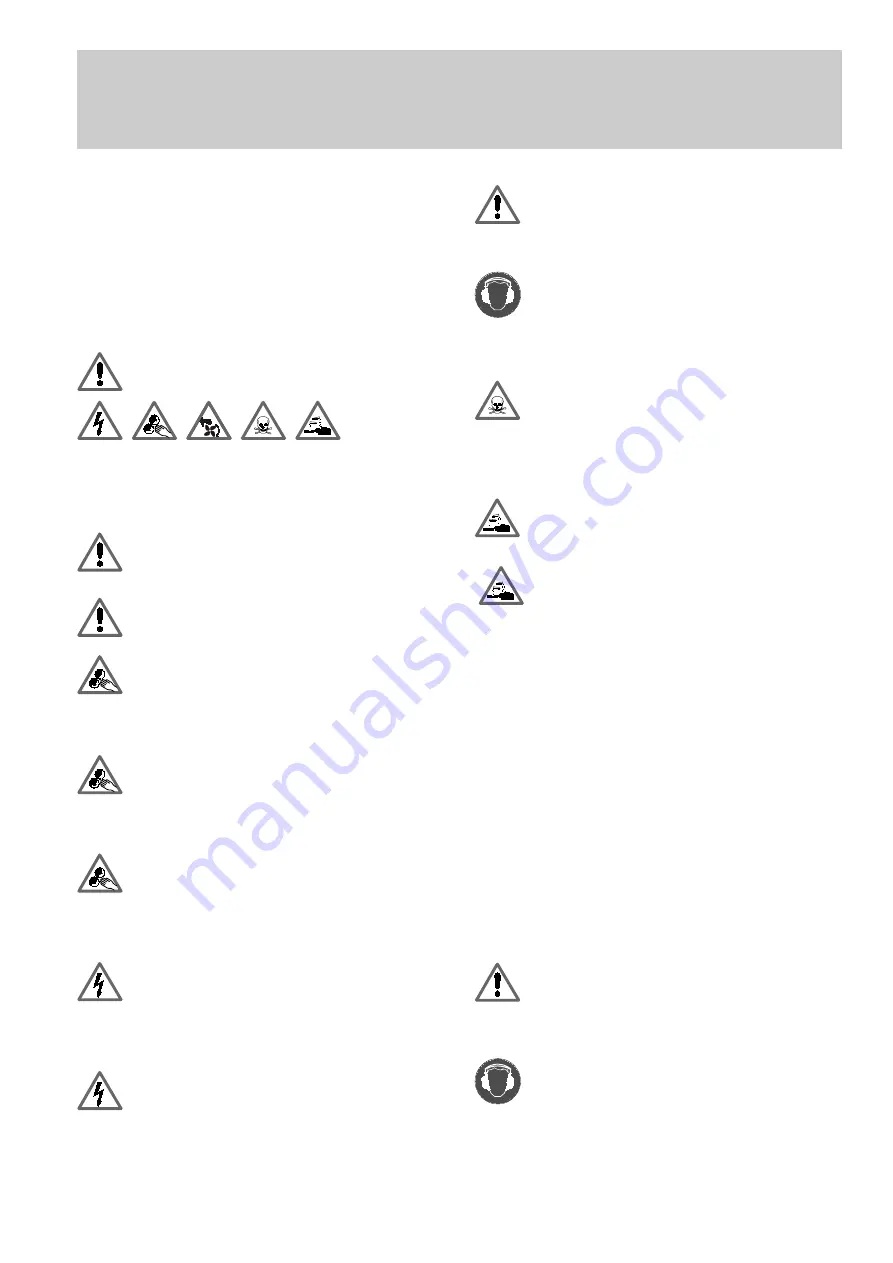
21
Noise levels in excess of 70 dB (A) can be produced
during measurements at the test bench, in particular at
high rotational speeds. People exposed to such high
noise levels over extended periods can sustain
damage to hearing
.
Operating personnel must wear protective ear muffs
during test operation.
1.2 Handling dangerous materials
Brake fluid is toxic!
Store brake fluid in its original containers only!
Brake fluid decanted into drinking bottles could be
consumed inadvertently.
Deadly dangerous! Immediate medical help is
necessary!
Batteries contain acid.
Danger of burning!
If brake fluid / battery acid come in contact with skin or
eyes, rinse eyes and affected part of the body
immediately with lots of clean water. Consult a doctor
if eyes and skin become inflamed.
Prevent contact with brake fluid / battery acid by
wearing
suitable protective work clothing
.
i
Replace brake fluid
annually
. Brake fluid as per DOT 3 and
DOT 4 is hygroscopic, and the brake system can malfunction
due to the formation of vapour bubbles.
!
Brake fluid constitutes
harmful waste
.
(FRG: Waste disposal catalogue No. 55 356, Category II).
Brake fluid must be collected separately from used oil, and
disposed of in accordance with the appropriate regulations.
!
Batteries constitute
harmful waste
.
They must be disposed of in accordance with the appropriate
regulations.
1.3 Safety instructions for the owner
Noise levels in excess of 70 dB (A) can be produced
during measurements at the test bench, in particular at
high rotational speeds. People exposed to such high
noise levels over extended periods can sustain
damage to hearing
.
The working area must be identified as an area of
excessive noise. The owner must provide ear pro-
tectors for employees (e.g. hearing protection muffs).
The working areas in the vicinity of the testing area
must be suitably protected.
1. Safety Instructions
Observe the safety instructions for your own safety and that of
your customers. The safety instructions indicate possible
dangers. At the same time, they show you what action to take in
order to avoid such dangers. The safety instructions are repeated
in the operating instructions. They are marked by the symbols.
i
Instruction
!
Caution
General danger or specifically
marked.
1.1 Safety instructions for operating personnel
Ensure that
nobody
is in the vicinity of the test bench!
Adhere to the accident prevention regulations!
Danger to anybody in the vicinity of the test bench if the
test piece is not clamped at right angles.
Operating personnel must wear
work clothes
with-
out loose ends or loops.
Risk of injury!
Keep
protective cowls
and
covers
closed during
testing.
Risk of injury!
Do not carry out
any adjustments
to the test piece
during a load test.
Risk of injury!
The test bench must be
disconnected from the
power mains
before
maintenance work
is carried
out, e.g., changing lamps and fuses.
Danger of
electrocution!
The electrical system must be protected from
mois-
ture
and
dampness
.
Danger of
electrocution!
















































